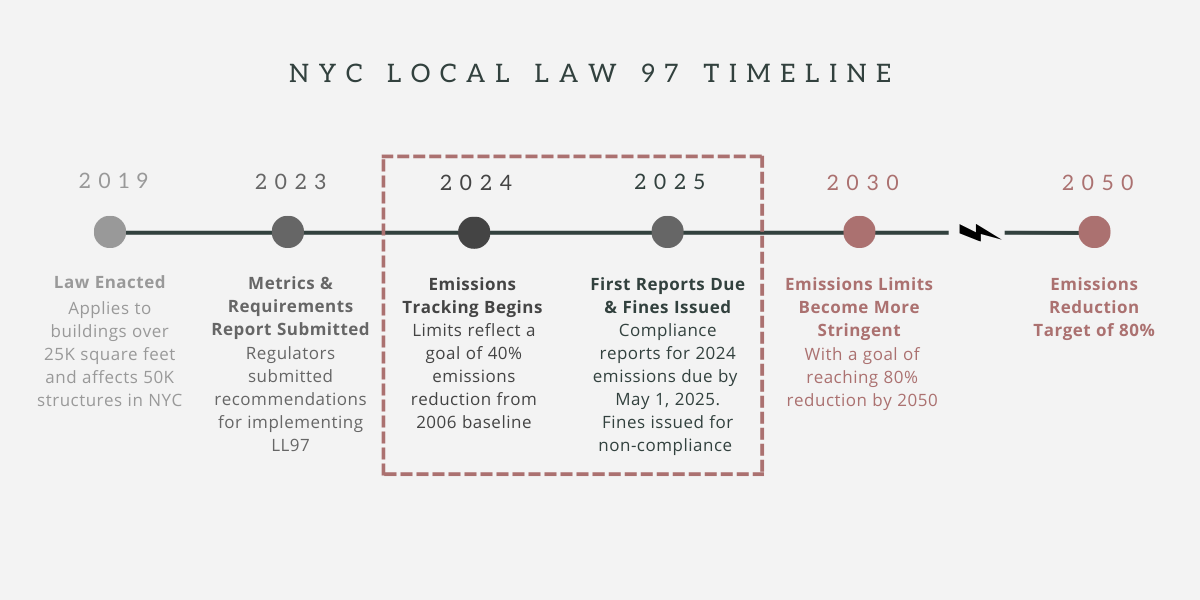New York City Local Law 97
Compliance doesn’t have to be disruptive. Learn how it could add value to your portfolio.
You have options that could help fund emissions reduction and add new value to your building portfolio. You need data, a plan, and help managing it.
Blueprint Power can help with that.
Baseline energy use to better manage it
Get insight into where you can reduce energy consumption & emissions within existing operations
Monetize flexible energy capacity
Earn revenue and bill savings from your buildings’ flexible capacity with grid programs that pay for it
Offset project costs with incentives
Learn how combined federal & local credits & incentives could cover 50% of your clean energy project costs
Improve energy resiliency & price risk
Identify opportunities to use less energy or use at less expensive times & reduce exposure to price volatility
Read below for more on New York City’s Local Law 97 including which buildings are affected, the timeline for implementation, and more. You can also use this calculator to begin estimating your building’s potential carbon penalties.

About Local Law 97
Local Law 97, passed by the New York City Council and signed into law in November 2019, aims to reduce carbon emissions from the city's largest producer: its buildings. The goal is to reduce emissions by 50% by 2030, and 80% by 2050, compared to 2006 emissions.
One recent study* found that up to 3700 buildings may be out of compliance with their emissions targets for the first reporting year, leading to an average of $54,000 in fines. That number grows to 13,500 buildings by 2030, resulting in up to $900 million in fines.
Who is Affected?
In general, buildings over 25,000 square feet will have increasingly stringent emissions caps under Local Law 97 (with some exceptions). Local Law 97 will impact approximately 40% of NYC's buildings, which account for nearly 60% of the city's building footprint.
While many buildings are affected, the emissions caps vary by the carbon intensity of the property type involved (banks vs. supermarkets vs. office buildings, etc.) with the caps based on how much a property emits per square foot.
What is the Timeline?
To avoid paying fines in 2025 for emissions generated beginning January 1, 2024, many buildings need to evaluate their options for reducing emissions this year and more over time. Blueprint Power can help building owners meet these requirements with strategies that can support near-term benefits and generate scalable, long-term value.
How Blueprint Power Can Help
Blueprint Power is helping real estate portfolios throughout New York City reduce their emissions. For building owners in New York who must comply with Local Law 97, Blueprint Power combines its ‘in-building data analytics’ platform with energy consulting expertise to help building operators harness the surplus energy in their buildings to generate new cash flows and help fund carbon reduction and energy resilience goals. We work with customers to identify existing flexible energy capacity, add new capacity, optimize its use, and connect it to energy markets that pay for flexible capacity.
*Real Estate Board of New York “New Report: Fines on NYC Property Owners for Buildings Emissions Could Exceed $900M Each Year by 2030” January 19, 2023.


